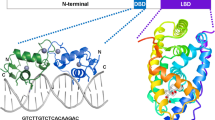Abstract.
Blastokinin or uteroglobin (UG) is a steroid-inducible, evolutionarily conserved, multifunctional protein secreted by the mucosal epithelia of virtually all mammals. It is present in the blood and in other body fluids including urine. An antigen immunoreactive to UG antibody is also detectable in the mucosal epithelia of all vertebrates. UG-binding proteins (putative receptor), expressed on several normal and cancer cell types, have been characterized. The human UG gene is mapped to chromosome 11q12.2 – 13.1, a region that is frequently rearranged or deleted in many cancers. The generation of UG knockout mice revealed that disruption of this gene causes: (i) severe renal disease due to an abnormal deposition of fibronectin and collagen in the glomeruli; (ii) predisposition to a high incidence of malignancies; and (iii) a lack of polychlorinated biphenyl binding and increased oxygen toxicity in the lungs. The mechanism(s) of UG action is likely to be even more complex as it also functions via a putative receptor-mediated pathway that has not yet been clearly defined. Molecular characterization of the UG receptor and signal transduction via this receptor pathway may show that this protein belongs to a novel cytokine/chemokine family.
Similar content being viewed by others
Author information
Authors and Affiliations
Additional information
Received 8 October 1998; received after revision 2 December 1998; accepted 11 December 1998
Rights and permissions
About this article
Cite this article
Mukherjee, A., Kundu, G., Mantile-Selvaggi, G. et al. Uteroglobin: a novel cytokine?. CMLS, Cell. Mol. Life Sci. 55, 771–787 (1999). https://doi.org/10.1007/s000180050331
Published:
Issue Date:
DOI: https://doi.org/10.1007/s000180050331




